Is 250W enough power for an electric bike?
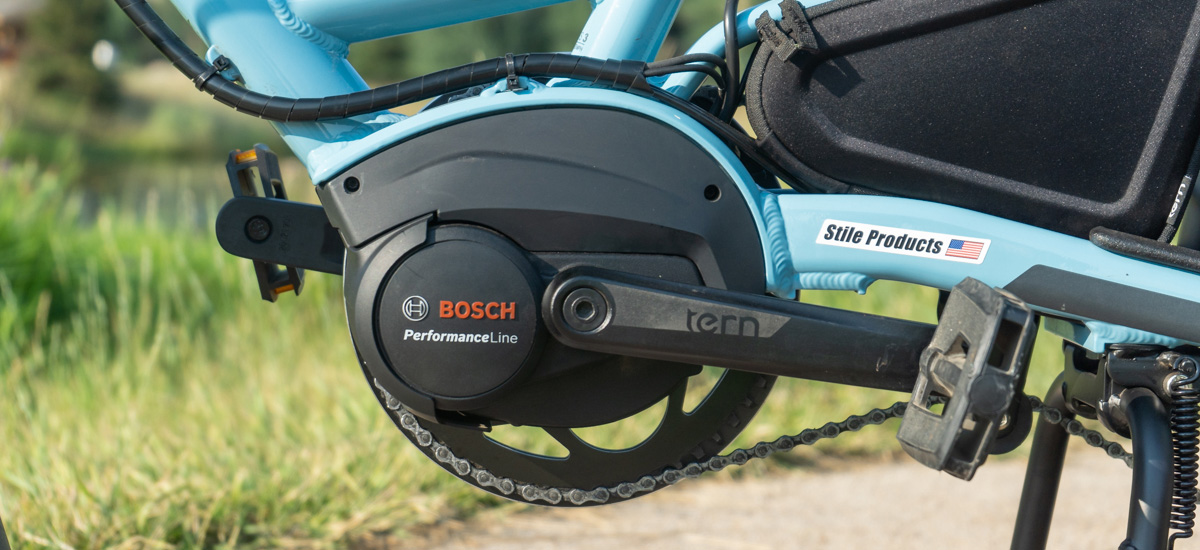
Aside from speed, power is probably the hottest topic — and selling point — in the electric bike world.
Conventional wisdom would say that when it comes to power, more wattage is better. But if that’s the case, why do so many high-end e-bikes come with what seem like smaller motors — and is 250W enough power for an electric bike?
There’s a few factors that dictate how much wattage an e-bike needs, ranging from the type of motor being used to how the e-bike was designed. It’s also helpful to understand what manufacturers are describing when they talk about motor wattage, and how U.S. law dictates how powerful an e-bike can be. This post will dive into those details and more.
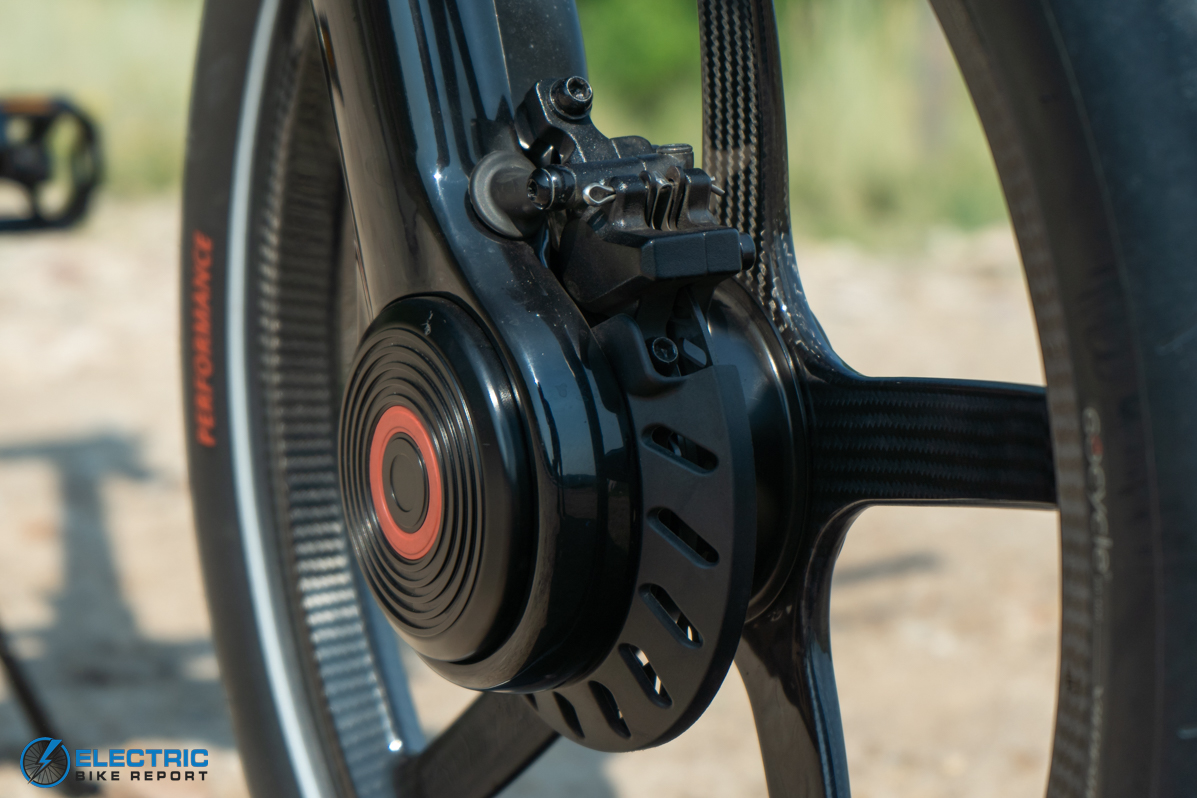
The small but mighty front hub motor on a GoCycle G4i+, arguably one of the peppiest, torquiest and most compact 500W hub motors we’ve tested.
But here’s a short answer that I’m sure will ruffle some feathers: Yes, we’ve found that 250W is often plenty powerful for many e-bikes. There’s some caveats to that statement, but by and large a 250W motor is enough to give a rider’s pedaling a nice assist. Remember, an e-bike is still a bicycle — by definition at least a little physical effort is required.
E-bike motor sizes: 250W to 750W
An e-bike motor’s power is measured in wattage, and in the U.S. motors typically range between 250W to 750W.
You can definitely find e-bikes with smaller and larger motors, but that range is what we typically see most often at Electric Bike Report. Motor sizes typically get larger or smaller in multiples of 50W — 250W, 300W, 350W, 500W and 750W are examples of motor sizes we see often.
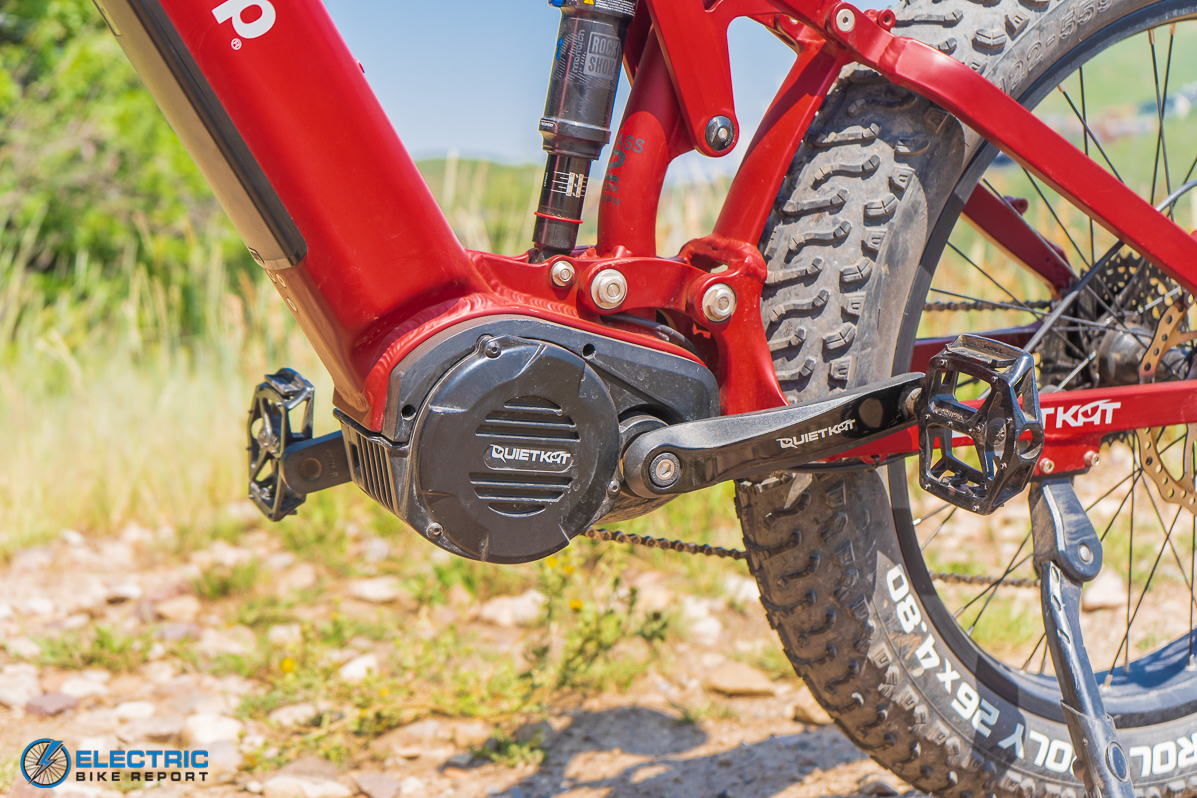
A Bafang Ultra mid-drive motor on a QuietKat JEEP all-terrain electric fat bike. One of the most powerful mid-drive motors on the market, the Ultra can produce 1,000W of nominal power, which is over the street legal limit. At that power level, this bike is designed for private land or OHV areas.
But while there’s no limit to how small you can make a motor, U.S. law does dictate how large an e-bike motor can be. In addition to having pedals and certain speed restrictions, e-bikes in the U.S. are limited to a nominal max motor output of 750W. Motors are allowed to momentarily produce more power than this, a metric called a motor’s max output, but we’ll dive deeper into the difference between a motor’s max and nominal wattage lower in the page.
Read more: Do you need a license to ride an electric bike?
It is very easy to find e-bikes that go well over the legal 750W limit, but those bikes do blur the line between electric bicycles and mopeds. In Electric Bike Report’s opinion, those bikes should be regarded, ridden and registered similarly to electric motorcycles. There are also e-bikes designed to be used on private land or OHV areas, but they do not meet the definition of a street legal e-bike.
When is 250W enough? Mid-drive vs. hub motors and nominal vs. max power
Power is all the rage right now, especially if you’re shopping for a more affordable e-bike.
But higher wattage does not always equate to a quicker e-bike. In fact, some of the most powerful feeling e-bikes I’ve tested have had 250W motors. It’s all about how that power is applied to the ground.
There are two types of motors primarily found on e-bikes: Hub drive motors that are laced into the rear or front wheel and mid-drive motors that sit between the crank arms in the bottom bracket of the frame. While e-bike motors are complex pieces of engineering that warrant a whole post just to themselves, there are some generalities we can make that will help you get the jist of the pros and cons of each.
Mid drive motors: When 250W is often enough
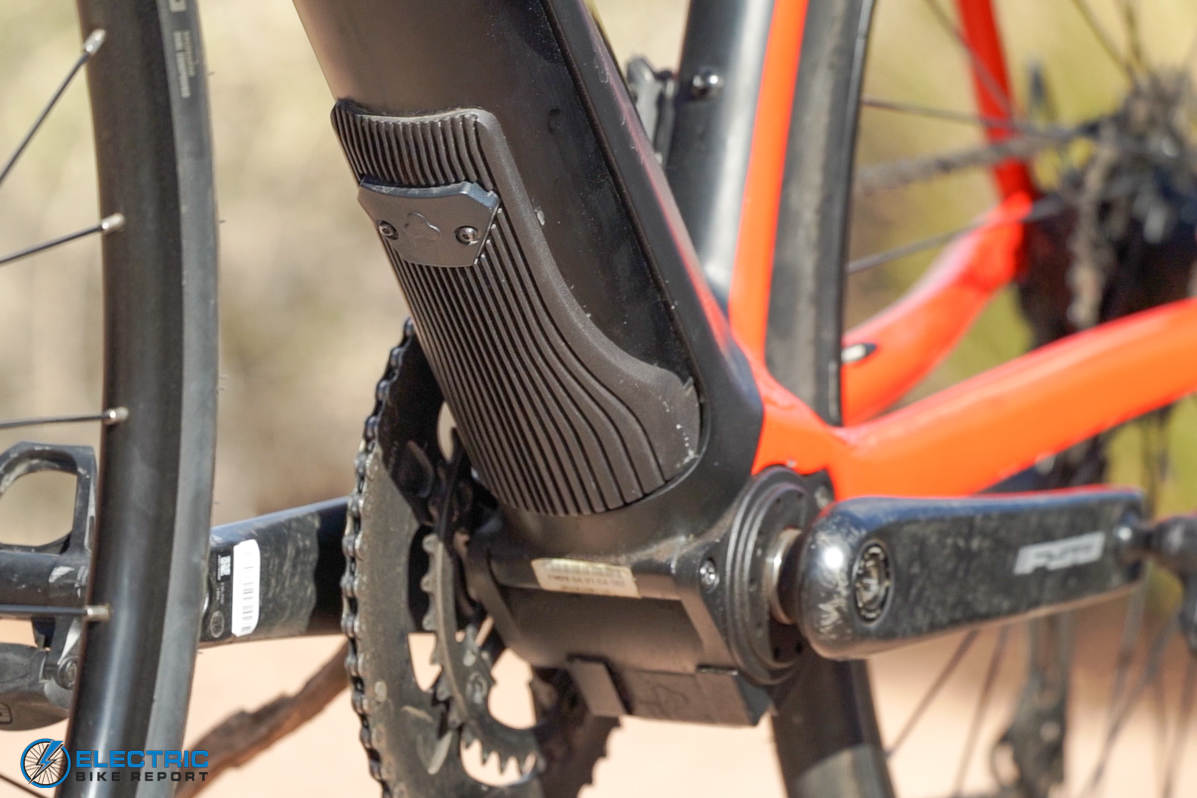
The Fazua Evation is a unique 250W mid-drive motor that’s configured as a removable drive pack containing the motor and battery. This particular example is nestled inside the downtube of a BULLS Alpine Hawk EVO electric road bike.
- Many, many mid-drive e-bike motors are nominally rated at 250W. And more often than not, these motors are powering e-bikes regarded among the most powerful and highest performance on the market. E-bike motor manufacturers on the bleeding edge of e-bike performance — namely Bosch, Brose, Shimano and more — make high performance 250W motors.
- Mid-drive motors make more power out of less wattage by leveraging the bike’s drivetrain. The bike’s performance, torque and speed will change relative to which gear you choose, making them optimal for high-performance e-bikes such as premium commuting e-bikes, e-cargo bikes, eMTBs and others.
- By using less wattage, the motors require smaller batteries and are often much lighter.
- This performance and efficiency often comes with a higher price tag. Mid-drive motors are often found on e-bikes costing more than several thousand dollars.
- Manufacturers are very good about building 250W mid-drive motors that are specially tuned for specific applications, such as high-torque motors for e-cargo bikes and high-speed motors for commuters.
Hub motors: More watts are better (most of the time)
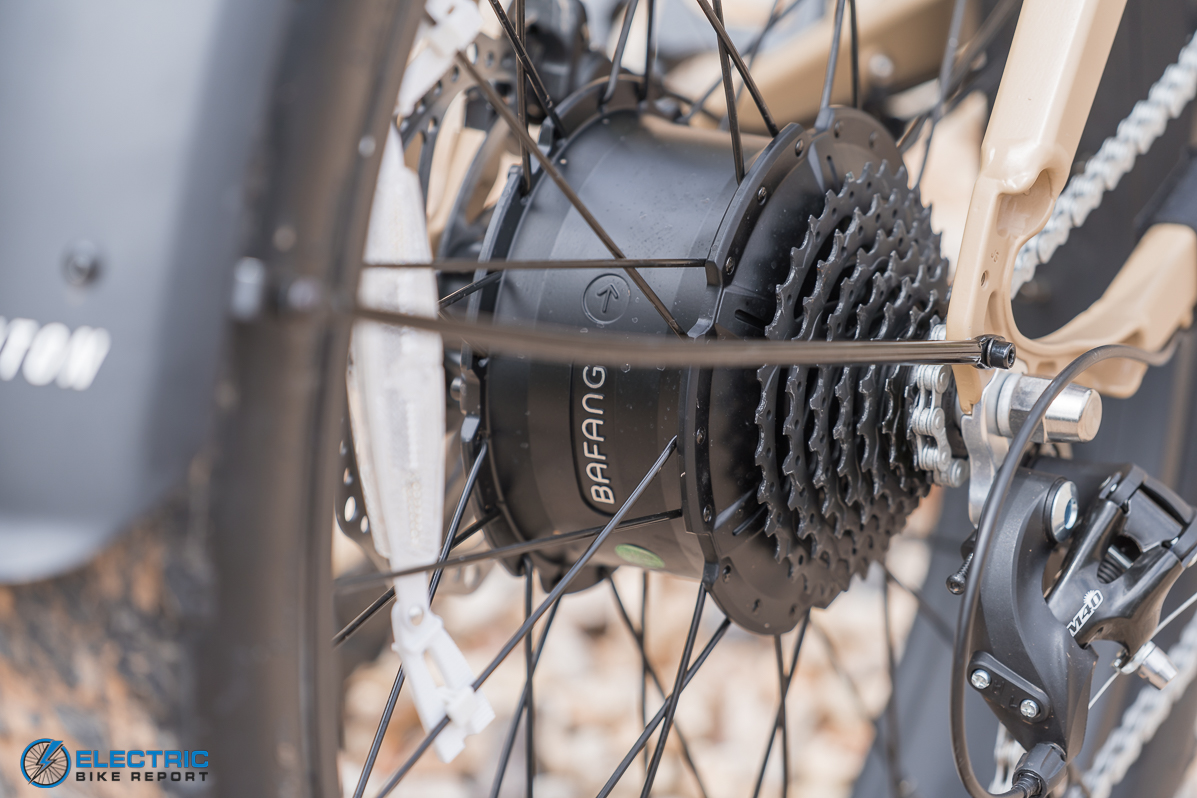
A 750W Bafang rear hub motor on an Aventon Aventure electric fat bike.
- Hub motors are where we typically see e-bikes bumping up against the 750W legal motor size. While more powerful on paper, hub motors — most often found laced into the rear wheel — do not transfer power through the gears and require much more energy to produce a similar effect as mid-drive setups. Because of the differences in how the power is applied, a 750W hub motor and 250W mid-drive are much more comparable in the real world than they’d seem on paper.
- These motors require larger batteries and usually yield a heavier bike.
- Hub motors are probably the most popular choice simply because they’re often quite a bit cheaper than mid-drives. Nearly all of the affordable e-bikes we test have hub motors. There are some exceptions to this rule — such as the ultra-premium hub-driven Stromer e-bikes and the lightweight Mahle eBikeMotion X35 hub found on many high performance e-road bikes.
- Though the rule of thumb is more watts are better for hub-driven e-bikes, we’ve ridden plenty of 250W hub drives that we really, really like. The Ride1UP Roadster V2 is an example of one such bike as is the KBO Hurricane. It all depends on the bike’s weight and how it was intended to be used. For example, 250W from a hub-driven city bike that’s lightweight and designed to be ridden in a flat area is probably plenty, whereas 750W is probably more appropriate for a hub-driven electric fat bike that weighs 70-plus lbs and is built to tackle more variable or hilly terrain.
Nominal versus max wattage
Last but not least, be sure you pay attention to whether an e-bike company is listing its “max” motor output in watts or the motor’s “nominal” output in watts, because the two metrics are very different.
A motor’s nominal wattage is the maximum amount of power it can sustain for long periods of time, while the max output is the wattage a motor is capable of for a very short burst. Nominal wattage is the more important of the two and really describes what a motor will feel like for the majority of the time you’re riding it.
Max output is still a useful rating — one that gives you an idea of how hard a bike might accelerate or how it might feel on a very steep hill — but motors are only capable of reaching their max output for just a few seconds. Anything more than that, and a motor would produce so much heat it risks permanent damage.
googletag.cmd.push(function() { googletag.display(‘div-gpt-ad-1614749289222-0’); });
googletag.cmd.push(function() { googletag.display(‘div-gpt-ad-1614749519812-0’); });
googletag.cmd.push(function() { googletag.display(‘div-gpt-ad-1614749673071-0’); });
googletag.cmd.push(function() { googletag.display(‘div-gpt-ad-1614749790940-0’); });
googletag.cmd.push(function() { googletag.display(‘div-gpt-ad-1614749942385-0’); });
googletag.cmd.push(function() { googletag.display(‘div-gpt-ad-1614750091831-0’); });
googletag.cmd.push(function() { googletag.display(‘div-gpt-ad-1614750223397-0’); });
googletag.cmd.push(function() { googletag.display(‘div-gpt-ad-1614750397610-0’); });



I recommend that you actually measure watts when you test 250 watt rated motors. It was reported in the 2020 Ebike Future Conference that 95% of the 250 watt motors tested exceeded the 250 watt rating.
Not to blur the lines of this article but manufacturers are known to under rate their motors to compete with European regulations or over rate them to compete with higher powered motors available to U.S. customers for example. In fact several even advertise that they are happy to provide you with a sticker stating your desired wattage needed to comply with your countries regulations.
Thanks for explaining the difference in power, torque and wattage, had been looking for this info for a while
I’m 200lbs and I’ve been satisfied with a 250 Watt ebike for last 5 years, only use the power as a backup when I hit hills. If your riding primarily for exercise a lower wattage isn’t a bad thing. My bike won’t push me up a hill without my effort
Nothing wrong with 250 W motor. I use a 750 w motor with 42x 11/36 for gears. Rode Crater Lake rim road 22 miles in and out at level 1 about 150 w. 750 w with a big battery = more fun. 250 W is cheaper, that’s about it.
It comes down to the controller. It is easy enough to go into the settings to increase the peak wattage. For example, ebikes rated as 750 watts sold in the US and ones sold in Canada rated as 500 watts due to the different legal limits of each country, have the same motor size.
I have an R Martin E-bike that came with a 250 watt and 36 volt battery setup with mid-drive, and this it is just right if you intend to provide plenty of pedaling during your ride. If you intend to ride it more like an electric scooter, it probably would be disappointing. For how I intend to ride, it’s a perfect ratio. It does limit power to around 18-20 mph and then the motor kicks out.
A good quality mid drive 250W motor is definitely ample for most uses – from urban commuting to country cycle touring. It also generally ensures safer riding and interactions on shared paths and bikeways. If riders are tempted to hit higher speeds they do not belong on paths that are there to protect people moving at lower speeds. I support the European and Australian pedelec restriction to 250W. Thanks for your dissection of this issue.
Thanks for the interesting and useful information in this article. I recommend that you run a grammar check before publishing to prevent needless distractions.
My 250 watt front-hub motor is adequate for my needs, but if cargo bikes need more power (not speed) then I feel the regulations should be changed. Big lorries have big engines so they are able to carry things around. A 2 litre engine wouldn’t be much use to them. Just as an aside, my brother sent me a link to the Electrom bike/vehicle. That is impressive.
Most premium 250W mtb have at least 80nm of torque. That is comparable to a 500-750W bafang geared hub. peak wattage is 600-800W depending on the bike. Possibly more? When you add in the ability to have the gearing you want, a lightweight 250W mid drive should do anything you want.
I think you have it exactly backwards when you say “Nominal wattage is what the motor will feel like.”
It’s exactly like driving a car. Almost all the time the engine will be putting out maybe 50 HP, but will put out far more when you punch the pedal. The nominal power on an eBike is what it can continuously dissipate but this limit only is met if you are fast cruising at 25+mph or going up a hill that takes 10 minutes.
Instead, it’s the peak output that you feel when you need full effort.
My Lectric hub motor is rated at 500W but easily puts out 850W for five minutes when I climb the steep hill nearby. No issues for that short a time.
I had a 500w front nongeared hub motor running off a 48v battery, with no sensor,just a straight throttle, and an engine controller unit which could adjust the output depending on whether you needed torque for a hill climb or speed on a flat run. It had a range of about 60km at high speed, with me pedaling hard thru 21 gears, or a lot further at lower speeds . It was immensely powerful, with wheel spin acceleration from a standing start, and I did carry 2 × 20kg bags of cement in the saddlebags up our steep driveway, with me pedaling of course. Even better, it had an efficient regeneration capacity at the push of a button when downhilling or braking. It did everything I wanted and lasted ten years, before battery death, I still haven’t ridden a better ebike.
Hi Jeremy,
Really interested in finding out about the motor you had. I’m building a eTouring bike and am scratching my head on the best motor(wattage) to use.
Thanks
Considering electric motors can have a full torque from zero rpm I’m a little unsure about how using the bikes gears dramatically improves performance as suggested above